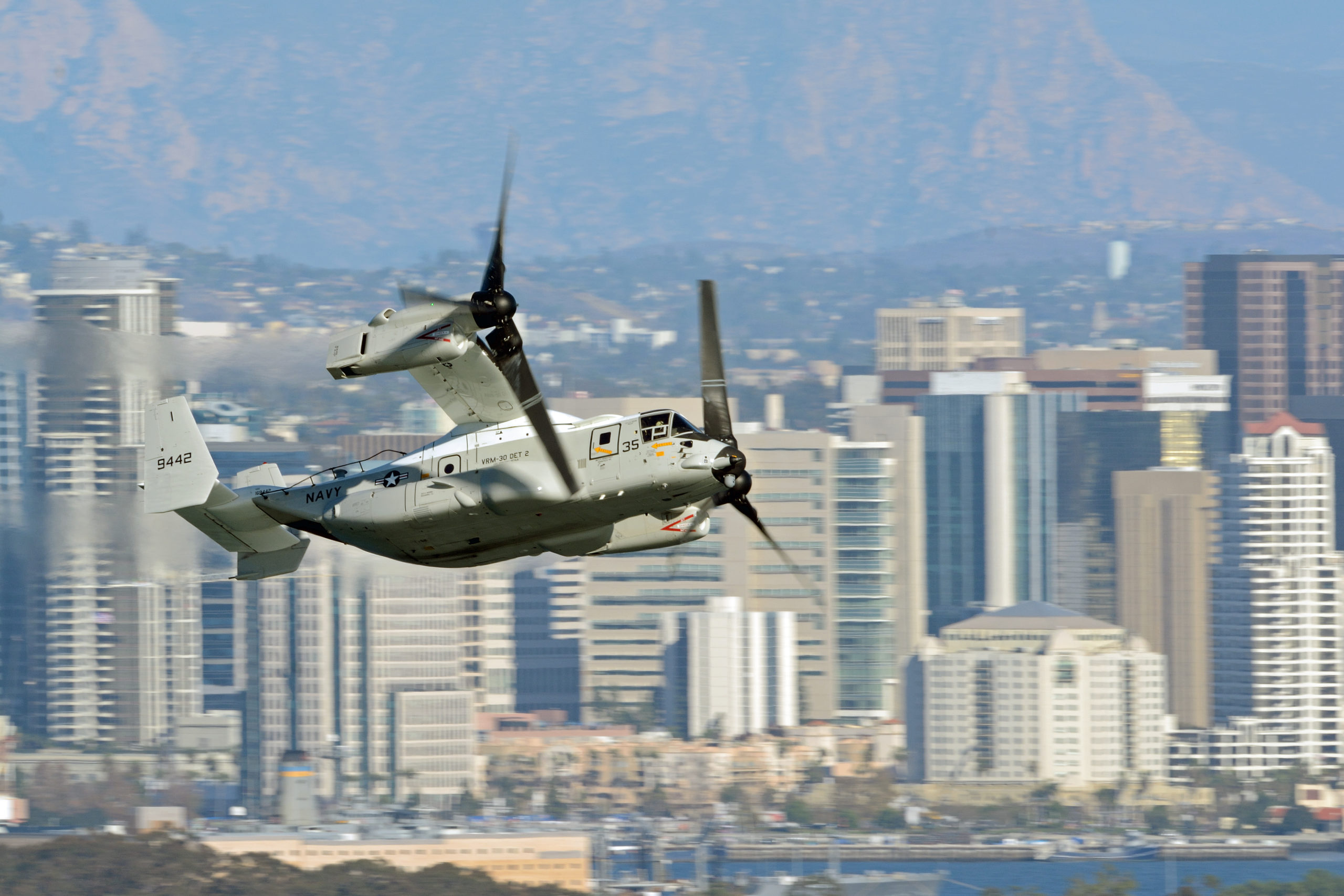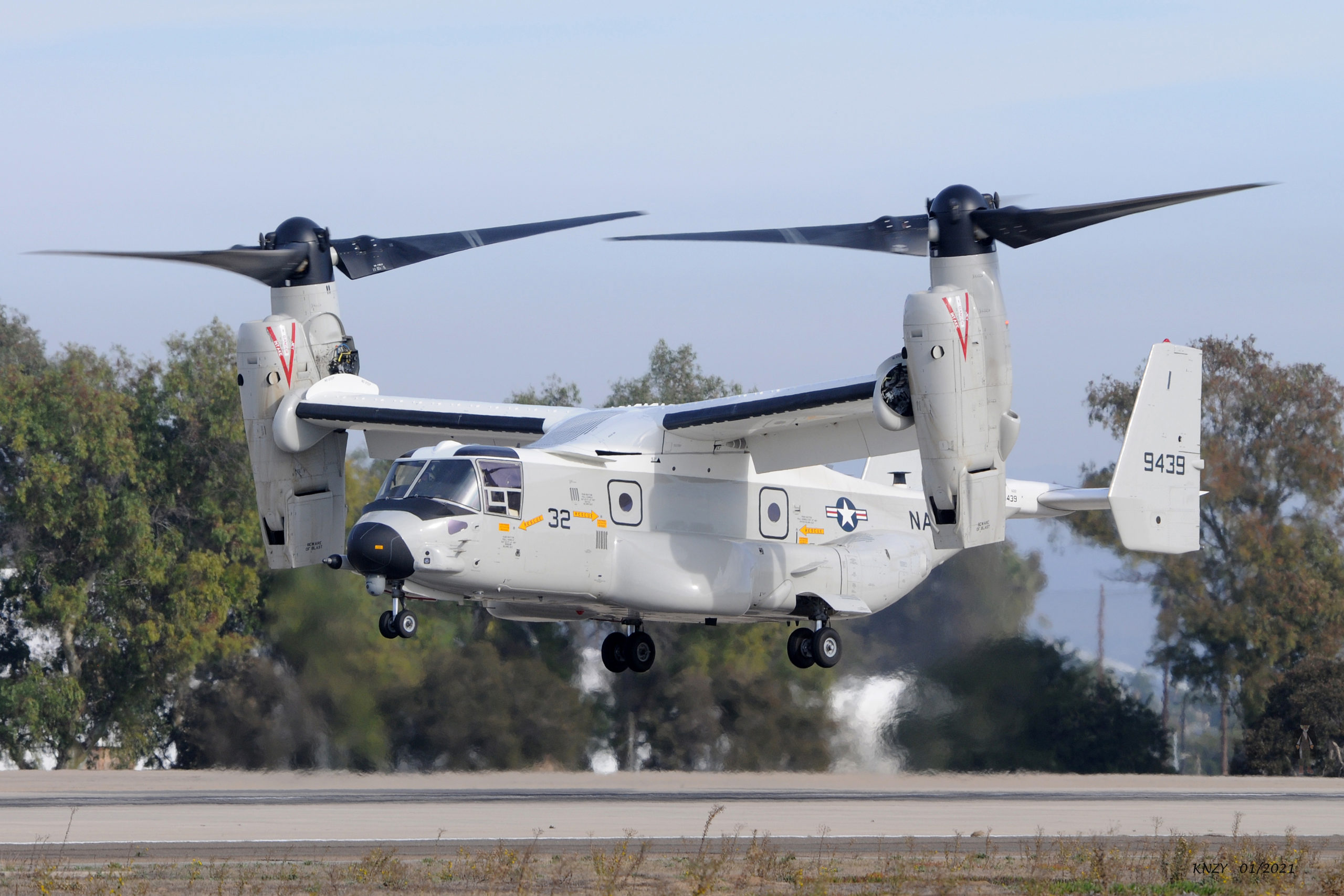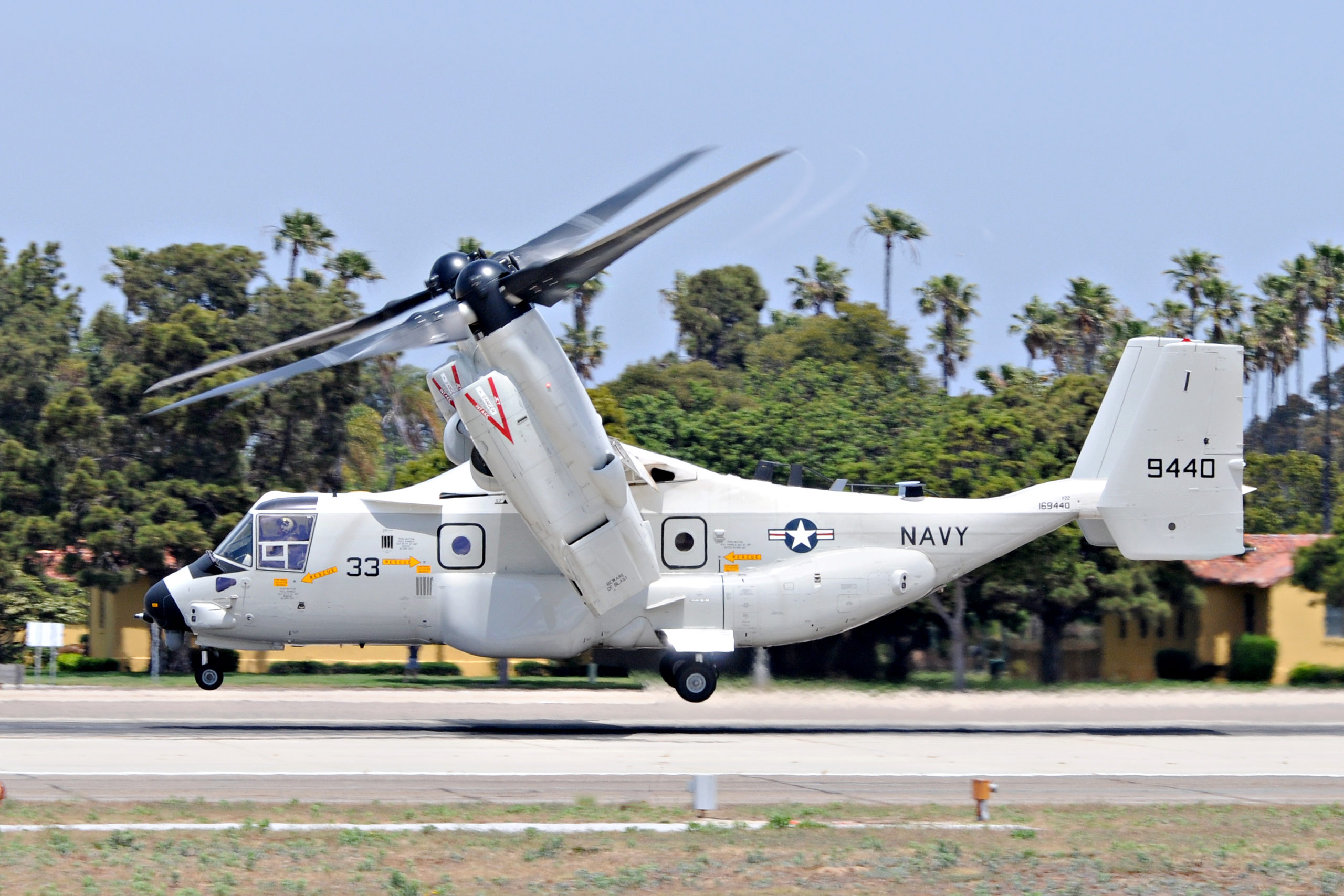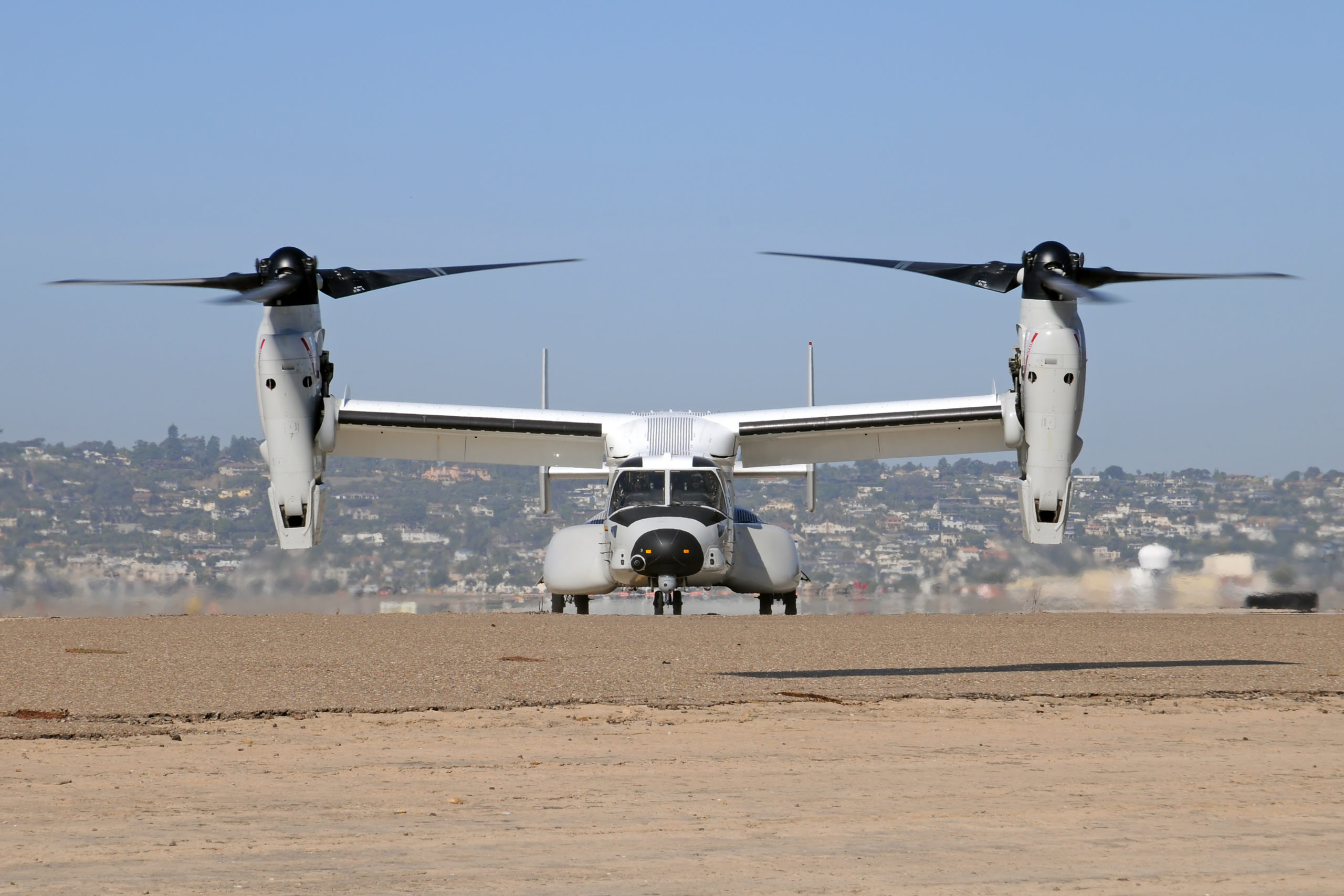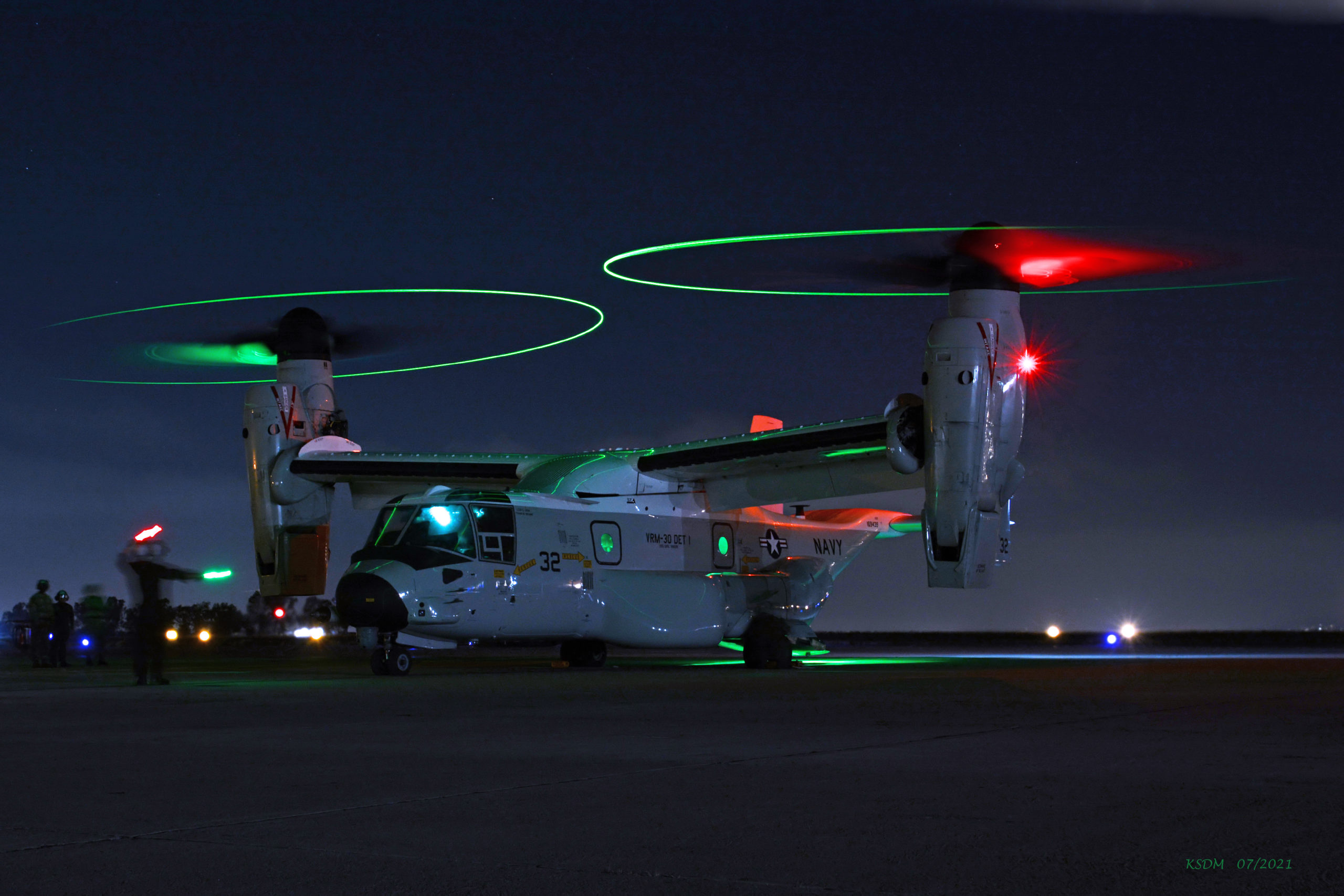By Robbin Laird
In an interview I did earlier this year with Vice Admiral Whitesell, the U.S. Navy air boss, he underscored that the shift to distributed maritime operations was a work in progress.
As he noted: “We are in an experimentation phase. We are working force distribution and integration. We are experimenting like Nimitz did in the inter-war years. We are working from seabed to space with regard to force integration. It is a work in progress but being successful operating in an environment where logistics are contested, where getting weapons to the fleet in conflict, is not just a nice to have capability — it’s a necessary one.”
What he was referring to in terms of contested logistics was the expanded role for the CMV-22B from being a one-for-one legacy replacement for the carrier-onboard-delivery (COD) mission for large deck aircraft carriers to becoming a distributed maritime fleet operations asset.
The Osprey provides an important stimulant for the shift in con-ops whereby the Navy‘s experimentation with distributed operations intersects with the U.S. Air Force’s approach to agile combat employment and the Marine Corps’ renewed interest in Expeditionary Advanced Base Operations (EABO).
In other words, the reshaping of joint and coalition maritime combat operations is underway which focuses upon distributed task forces capable of delivering enhanced lethality and survivability.
Captain Sam Bryant, Commander, Fleet Logistics Multi-Mission Wing, highlighted in an interview I did with him this past January in North Island that the CMV-22B compared to a legacy Osprey has much more capability. The Osprey is a revolutionary aircraft which far exceeds any rotorcraft’s performance limits on range and speed.
But Bryant noted about the Navy’s CMV-22B goes even further when compared with the USMC MV-22: “We have better range. We have much better avionics. We have better communications which allows us to connect with the strike groups more securely. We are better suited for long-range navigation operations, and the flexibility required to support a high-end fight in the Pacific.” In other words, the CMV-22B, unlike its COD predecessor, the C-2A, can operate as a fleetwide support asset, not simply a large deck carrier logistics asset.
The U. S. Navy’s deployed fleet — seen as the mobile sea bases they are – faces a significantly different future as part of a distributed joint force capable of shaping a congruent strike capability for enhanced lethality.
This means not only does the fleet need to operate differently in terms of its own distributed operations, but also as part of modular task forces that include air and ground elements in providing for the offensive-defensive enterprise which can hold adversaries at risk and prevail in conflict.
The CMV-22B is ideally suited to operate across this highly complex distributed combat chessboard. And, because the Marines have deployed the MV-22B for decades, there is a very robust operational and sustainment expertise already in the fleet. This means the CMV-22B can deliver core carrier logistics needs while also providing logistics support across the entire fleet – including the vital Military Sealift Command that will play an essential role.
As the fleet looks to enhance its lethality and survivability in a distributed maritime environment, there is no more critical capability than sustained logistics support in the contested battlespace. T
his is how Rear Admiral Meyer, Commander, Naval Air Force Atlantic, put it with regard to how the Navy was reworking carrier operations in a way that highlighted this key logistics requirement: “The fact that our carrier strike groups can move 700-plus miles in a 24-hour period, the increasing range and lethality of our ever-advancing air wing and the weapons that those aircraft carry can hold huge areas of the surface at risk.
“Over the course of a three-day period, it would mean just a staggering volume of real estate, roughly the entire Pacific AOR over a 72-hour period. But it is that logistics support train that is really a key part that makes that happen.”
The CMV-22B can do this for the carrier-enabled distributed maritime force.
We just need more of them.
The photos of the CMV-22B is credited to Raymond Rivard, San Diego, CA.
See also, the following:
Distributed Operations and Logistics in the Pacific: How to Shape a Way Ahead for the Fleet


